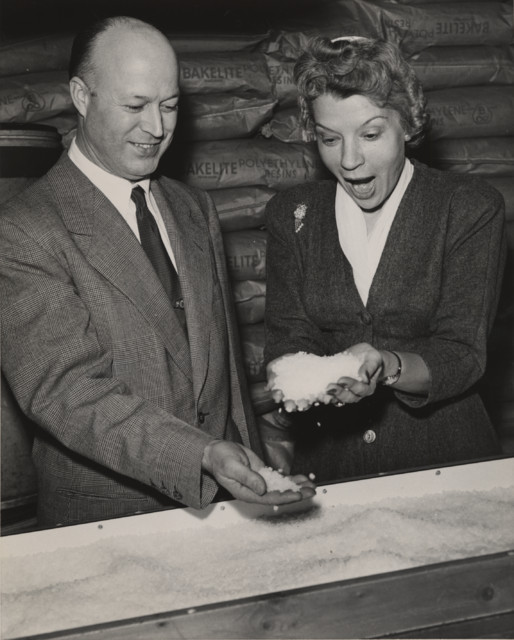A Girl's Best Friend (1946)
In lyrics laden with nostalgia, in Bookends Simon & Garfunkel sang, “Time it was, and what a time it was, it was/A time of innocence/ A time of confidences/Long ago, it must be…” And one of the memories from the 1950s involve Tupperware parties where housewives envisioned themselves as mini moguls. A time when Tupperware and the rotary phone held sway. The ground-breaking plastic marvel sprung full-blown from the mind of Earl S. Tupper.
Proof-positive of fate’s fertile imagination is a farmer’s son invented a product that made him a millionaire many times over and whose brainchild would reside in Buckingham Palace, the Museum of Modern Art, and the Smithsonian. Earl Silas Tupper, the only child of Ernest and Lulu, was born in 1907 in Berlin, New Hampshire, raised on a farm in Harvard, Massachusetts. At age ten, he discovered it was more profitable to sell neighbors’ vegetables than by raising his own and provided door-to-door deliveries. He determined to become a businessman who would make a million dollars by age thirty. In 1931, Earl married Marie Whitcomb with whom he had four sons and one daughter. To support his family, Earl started the Tupper Tree-Doctors Company that specialized in tree-surgery; the Great Depression led to its collapse. 
In the 1969 movie, The Graduate, Mr. Maguire advised Benjamin Braddock, “There is a great future in plastics.” Twenty years earlier, while working in a Dupont chemical plant, Earl came to the same conclusion. When he spied a lump of chemical waste, Earl envisioned a new science of food storage, a vast improvement over the era’s practice of covering leftovers with shower caps. To promote his brainchild, Earl sent Britain’s then Princess Elisabeth a wedding gift of his variation of porcelain. Despite publicity gimmicks, his product gathered dust on department store shelves. Plastic was an unfamiliar entity and shppers felt their Jell-O molds would taste like an oil filter.
Brownie Wise, a thirty-four-year-old divorced single mother of a chronically ill son put Tupperware in kitchens throughout the world, including Queen Elizabeth II’s, who keeps her cereal in its bowls. In a Seinfeld episode, Kramer is livid that a homeless man never returned his Tupperware. A Massachusetts insane asylum found Tupperware an ideal replacement for the noise of aluminum cups and plates.
Brownie’s acumen lay in promoting Tupperware parties that allowed 1950s housewives a chance to earn money and to socialize with fellow suburban matrons. A master marketeer, she rewarded hostesses with fur coats, cars, and European vacations. Her devoted salesladies flocked to Brownie’s annual rallies that resembled a frenzied Pentecostal Revival. A year after its founding, Tupperware garnered sales of $5,000,000 and Business Week magazine made Brownie the first woman-seated on a peacock throne- on its cover. Earl rewarded his star saleswoman with an eight-room mansion on a lake in Kissimmee, Florida. She drove a pink Cadillac, dyed her pet canary pink, and clothed herself in couture and expensive jewelry.
Despite their plastic empire, Earl disapproved of Brownie’s high profile and flamboyance, and fired her in 1958. In the same year as Brownie’s departure, Earl divorced Marie, and sold his business to the Rexall Drug Company for $16 million. To avoid taxes, Earl later renounced his citizenship and moved to Costa Rica. His 1983 funeral was in San Jose; to common knowledge, his casket was not made of oversized Tupperware.
Brownie and Earl were cut from very different cloths but in one aspect they would agree: its plastic, not diamonds, that’s a girl’s best friend.


